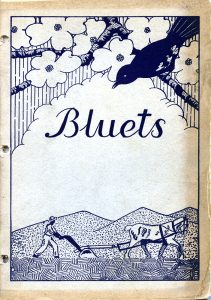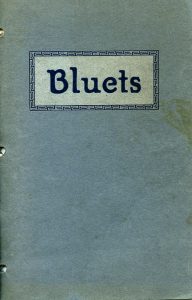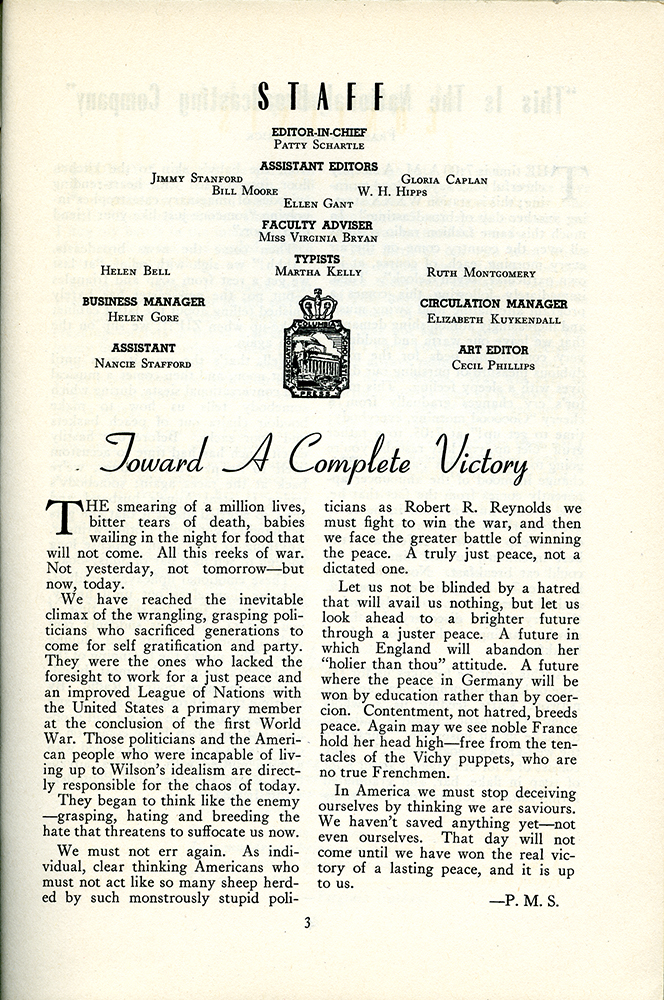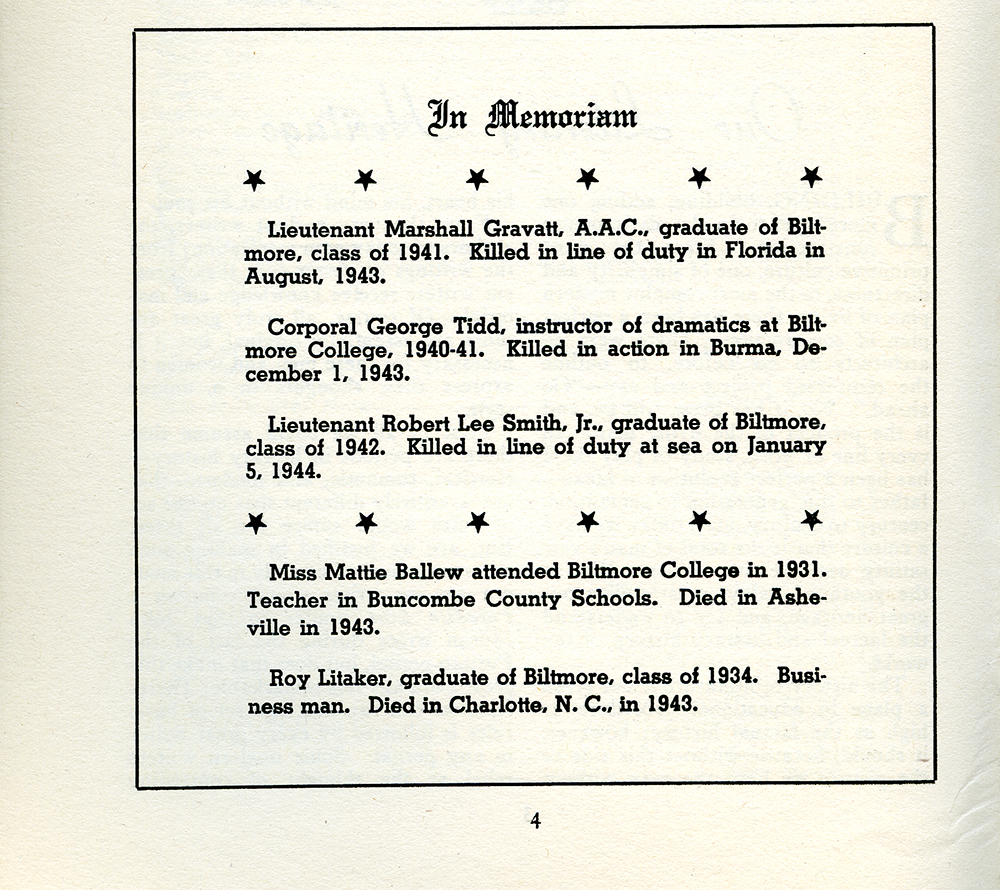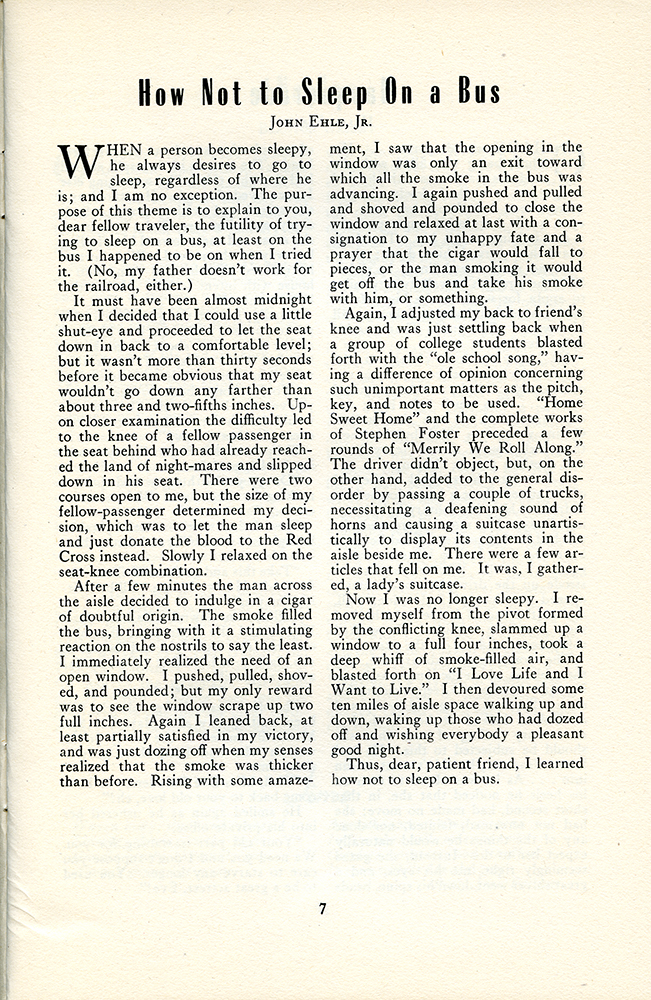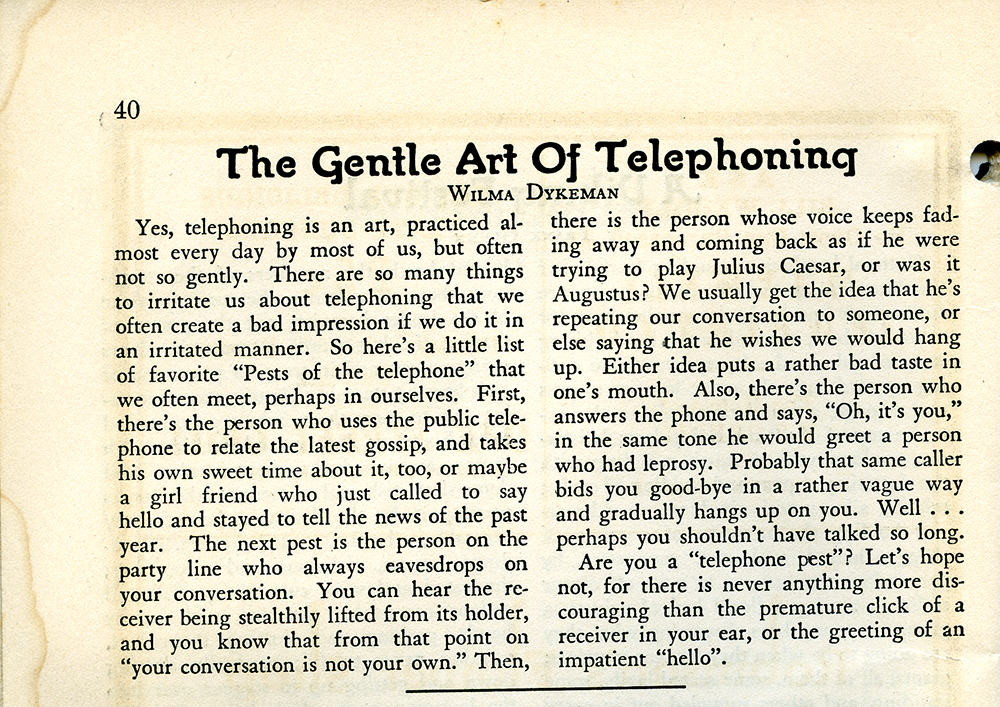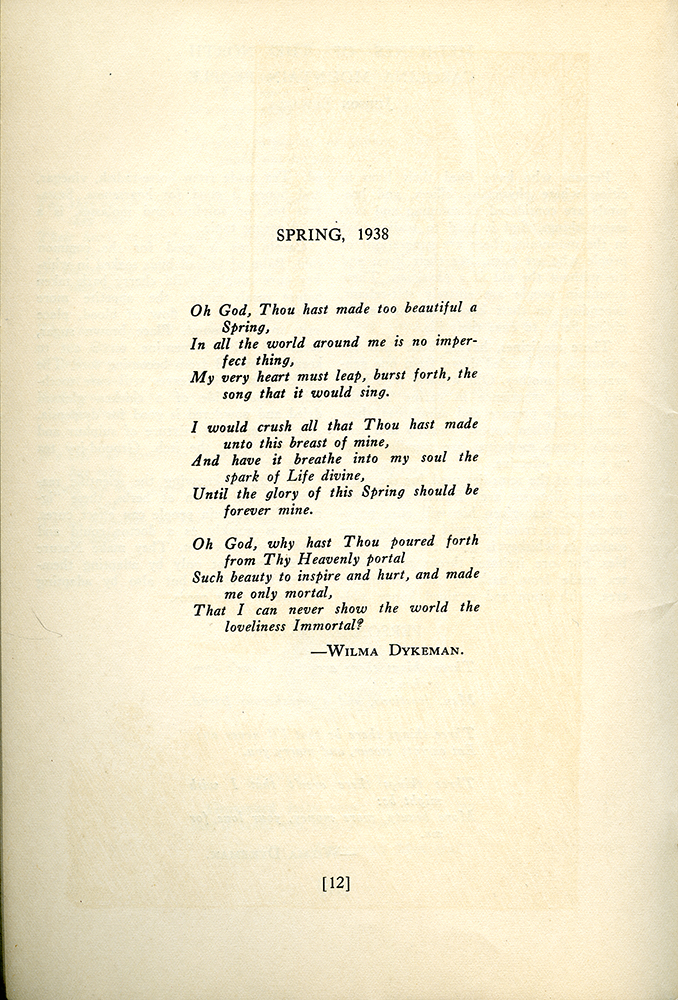Formed in 1927 as a two year college, Buncombe County Junior College only had one class graduate during the roaring twenties.
Very little archival evidence of that first graduating class of 1929 exists, the most notable document being program from that first commencement. The program lists 29 graduates, with the majority of these being women.
However, the person chosen to be the speaker for the class of 1929 was Roy Taylor, one of the few men graduating that day. Talking with Chancellor William Highsmith in 1984, Taylor thought that being part of the college debate team led to his selection.
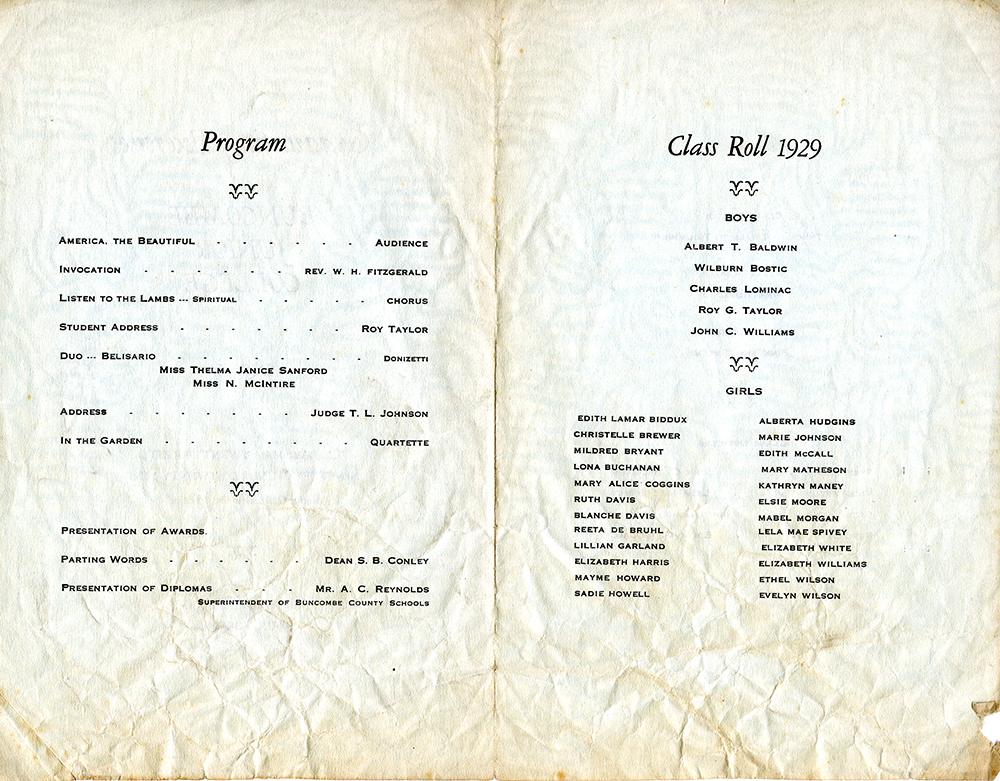
“Two years ago we gathered here as the first class of Buncombe County Junior College, an institution organized and supported by the citizens of Buncombe County who saw the need for furthering the process of home education.
The county, which was already in debt, was unable to support us with the modern college needs. They secured the necessary faculty members, they obtained rough rooms on the first floor of this high school building, and they left the rest to us.
Nothing was provided for athletic equipment or a coach, and we wanted both. We were determined to have a football team, a team that we were not ashamed of. We had our team, but to do it we had to go in debt $1000 during the first month of the life of our college. We wanted a school paper, and we went in debt to get it.
In various ways we had to overcome the law of inertia and play the part of pioneers in getting started.”
Taylor described how students sold season tickets, charged admission to games, had carnivals and pancake suppers, and accepted donations, enabling them to raise over $2000 in the two years that he was at Buncombe County Junior College. In turn, this meant that the college had winning football and girls’ basketball teams – although the boys’ basketball team was not so successful – a quality literary magazine called Bluets, a literary society, and a student council.
In addition to lack of funds, the college faced other adversities. It was a very small college – only 85 students enrolled in 1927. So, although a football team formed in the fall of 1927, there were only 16 to 18 in the squad, meaning they couldn’t practice a scrimmage. Nonetheless, the $1000 debt Taylor referred in his class address does seem to have enabled the team to have a uniform.
Taylor was not native to North Carolina, having been born in Vader, Washington on January 31, 1910. However, not long after his birth, the family moved to Buncombe County, and Taylor was educated in the county’s public schools.
After Buncombe County Junior College, Taylor attended Maryville College in Tennessee. He told Highsmith that he always wanted to be a lawyer, but did think about training to be a teacher. However, whilst he was studying law at Asheville University Law School, he did teach at Black Mountain High School. After getting his J.D., he became a lawyer in private practice in Asheville.
After serving in the US Navy from 1943-1946, Taylor entered politics, and was elected to the North Carolina General Assembly in 1947.
During his time in the state legislature, Taylor helped drive the initiative leading to the 1957 Community College Act. His old alma mater, now Asheville-Biltmore College, subsequently became the first community college in North Carolina, an event that he told Highsmith was key to the college’s long term survival as it meant Asheville-Biltmore received state funding.
In the spring of 1960, North Carolina Congressman David M. Hall died while in office, and Taylor was elected to take his place. Taylor served out the term as the 12th District Representative, and was elected for eight Congresses after that as the 11th District Representative. In total, he was in the House of Representatives from June 25, 1960 until January 3, 1977, and he served on the Interior and Insular Affairs Committee, and was chairman of the National Parks and Recreation Subcommittee.
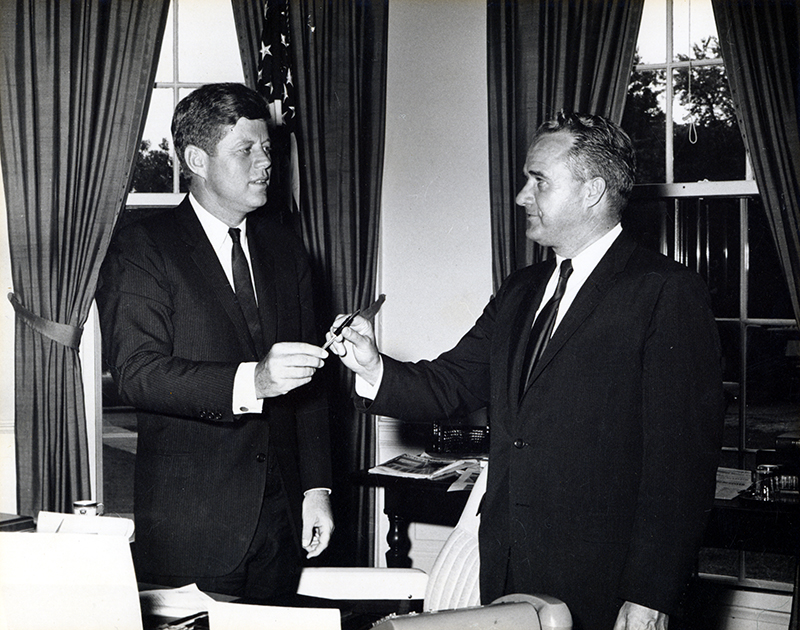
Despite his involvement in national politics, Taylor still had time for his former college.
In 1947, he had been named president of the alumni association, and in 1966 was part of the alumni association reorganization committee, ensuring the organization would meet the needs of a senior college, which Asheville-Biltmore had recently become.
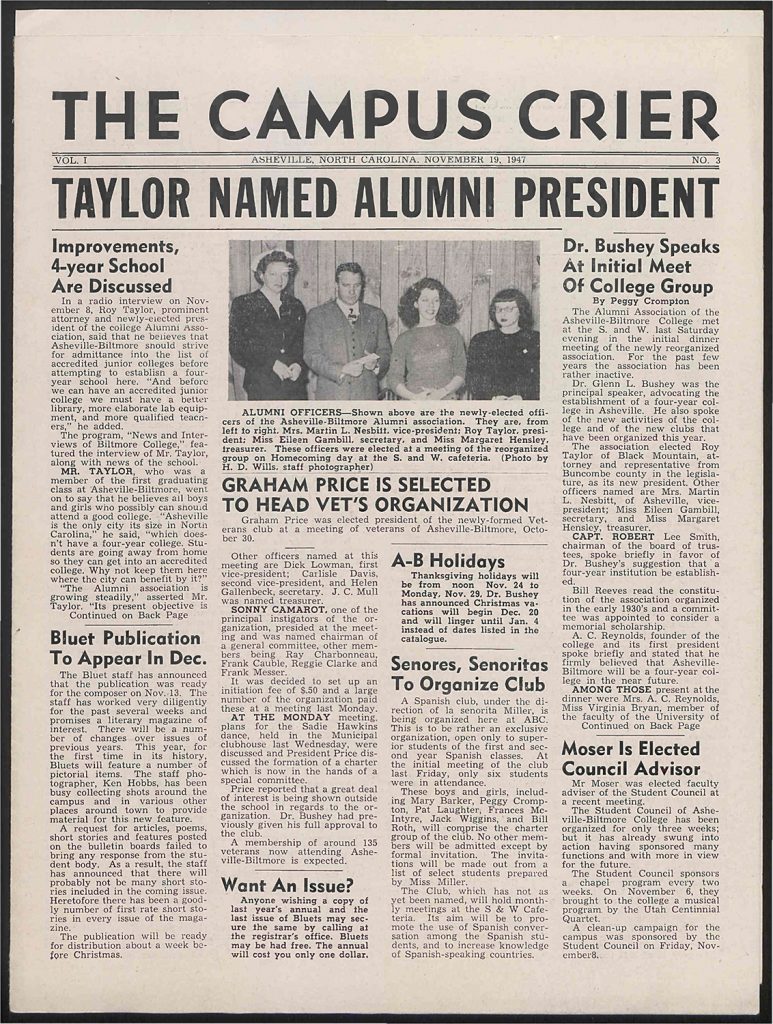
Taylor also played a key role in the Southeastern Forest Experiment Station being located on the UNC Asheville campus, and, in 1980, was part of the groundbreaking ceremony for the station
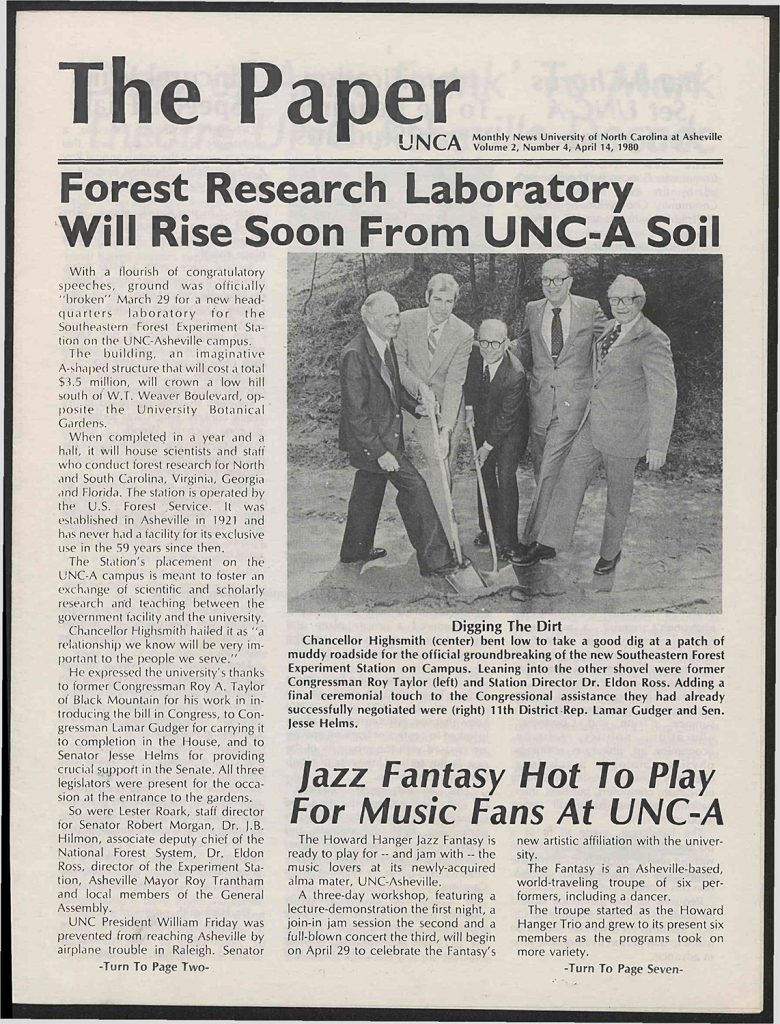
In 1986, the UNC Asheville recognized Taylor’s contribution to the university when he was one of the first three people to be presented with an honorary degree.
As further recognition of Taylor’s service, each year the university presents the Roy A. Taylor Distinguished Alumnus or Alumna Award, UNC Asheville’s highest alumni award.
Roy Taylor died on March 2, 1995.
- Colin Reeve, Special Collections



